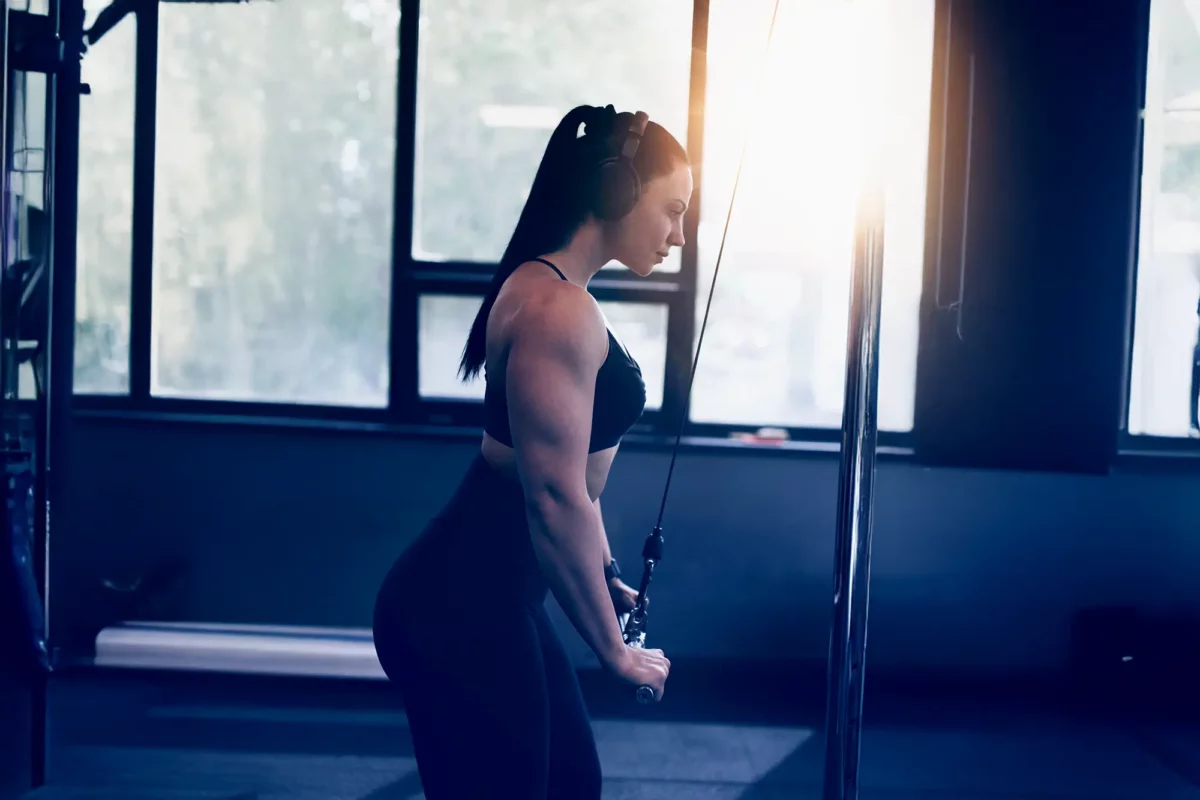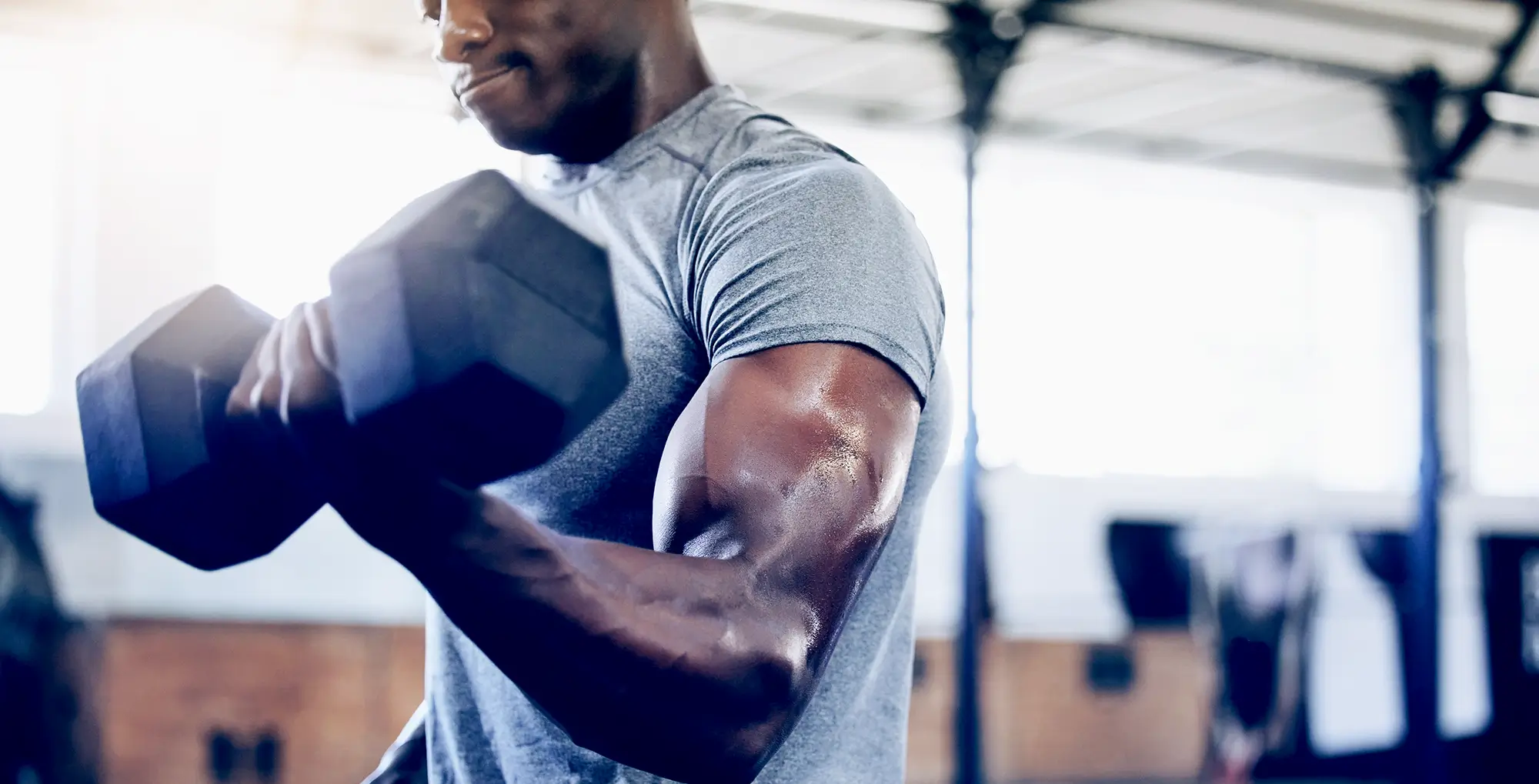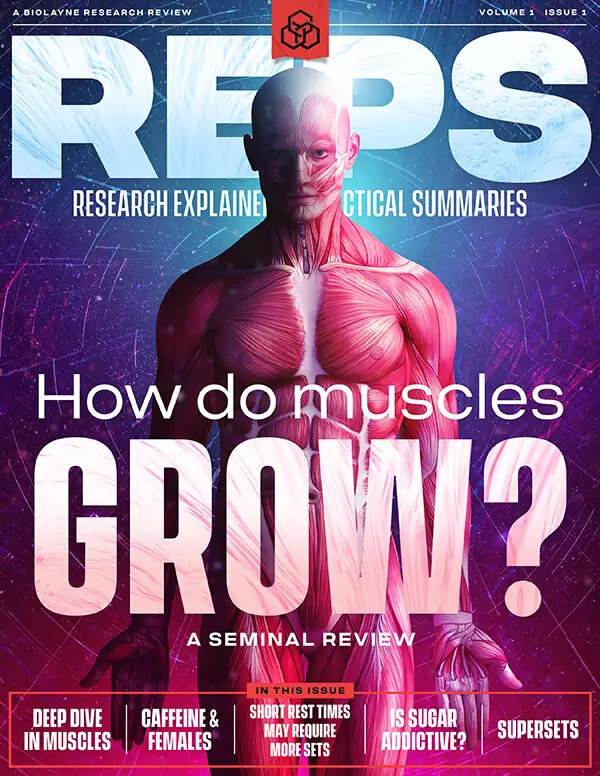This study explored the effects of ‘cheat’ reps on biceps and triceps hypertrophy. Both strict and cheating approaches produced similar increases. Does this mean strict form isn’t necessary? Let’s unpack this in a bit more detail.
Overview
- What did they test? Twenty-five untrained participants completed the eight week training study, with one arm assigned to strict training techniques and the other using momentum. They trained twice weekly, performing four sets of 8–12 reps to failure on the dumbbell curl and tricep pushdown. Muscle thickness and upper arm circumference were measured both before and after the training period.
- What did they find? Using momentum did not impact muscle thickness or arm circumference differently from strict technique. Both training groups showed similar increases after the training period. However, the arm using momentum achieved a higher volume load (sets × reps × load) throughout the training protocol.
- What does it mean for you? When training upper arm muscles, enforcing strict form may not offer additional benefits for hypertrophy. However, as this is the first training study to investigate this, and since it involved untrained participants, the findings should be interpreted cautiously until further research is available.
What’s the problem?
Within resistance training circles, debates sometimes arise between advocates of strict technique and those who incorporate momentum within their training. Proponents of strict technique argue that it ensures the target muscle is the focus of the exercise, theoretically maximizing hypertrophy by focusing the training stimulus on the target muscle. On the other hand, those in favor of using momentum often point to examples from professional bodybuilders, who frequently can be seen to use ‘cheat’ reps, introducing momentum or body movement to complete more repetitions or lift heavier weights.
This debate over whether strict form is essential or if using momentum can be equally effective has not been the subject of scientific investigation, aside from some acute or simulation research 1. However, this month’s study provides - to my knowledge - the first chronic training study to explore this research question. Given that I often receive criticism from my training partners about the use of momentum during my bicep curls, the outcomes of this research were particularly intriguing to me.
It’s worth noting that this study is a preprint, meaning it has not yet been peer-reviewed or accepted for publication. Therefore, the manuscript reviewed here may undergo revisions before final acceptance.

Purpose
This study aimed to investigate the impact of eight weeks of training with strict technique compared to using momentum on the muscle growth of the biceps and triceps in untrained participants.
Hypothesis
The authors hypothesized that training with momentum would result in smaller increases in muscle thickness due to a reduced stimulus to the target muscles.







